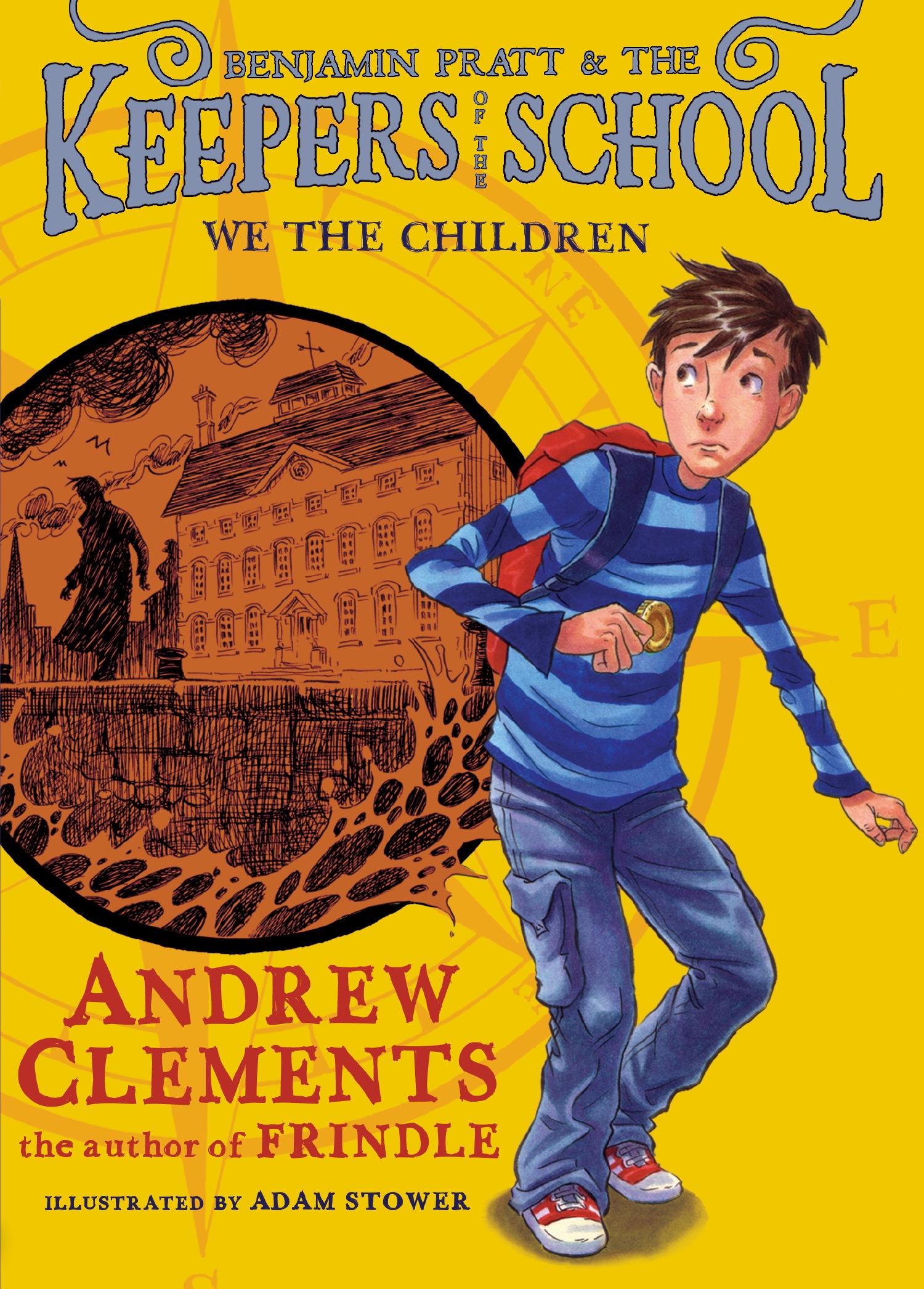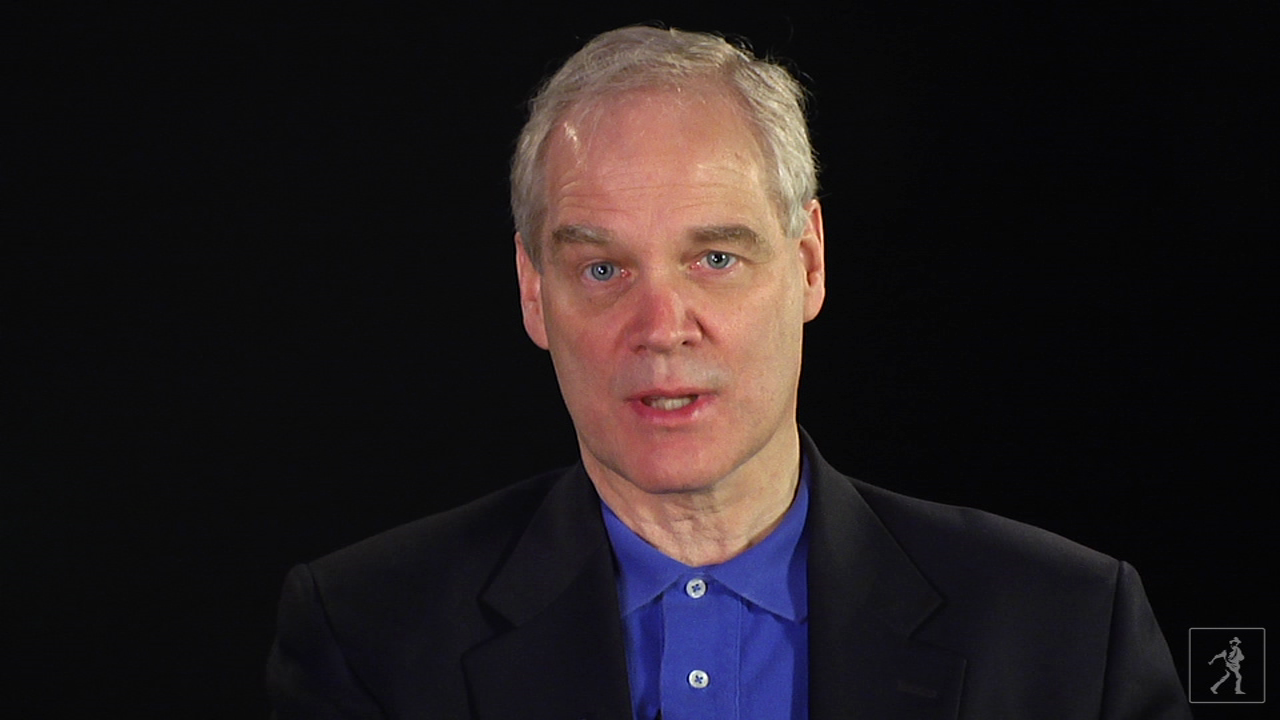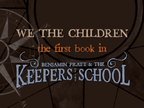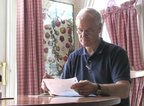LIST PRICE $8.99
PRICE MAY VARY BY RETAILER
Free shipping when you spend $40. Terms apply.
Buy from Other Retailers
Table of Contents
About The Book
Benjamin Pratt’s school is about to become the site of a new amusement park. It sounds like a dream come true! But lately, Ben has been wondering if he’s going to like an amusement park in the middle of his town—with all the buses and traffic and eight dollar slices of pizza. It’s going to change everything. And, Ben is not so big on all the new changes in his life, like how his dad has moved out and started living in the marina on what used to be the "family” sailboat. Maybe it would be nice if the school just stayed as it is. He likes the school. Loves it, actually. It’s over 200 years old and sits right on the harbor. The playground has ocean breezes and the classrooms have million dollar views…MILLION DOLLAR views. And after a chance—and final—run-in with the school janitor, Ben starts to discover that these MILLION DOLLAR views have a lot to do with the deal to sell the school property. But, as much as the town wants to believe it, the school does not belong to the local government. It belongs to the CHILDREN and these children have the right to defend it!
Don’t think Ben, his friend Jill (and the tag-along Robert) can ruin a multimillion dollar real estate deal? Then you don’t know the history and the power of the Keepers of the School. A suspenseful six book series, book one, We the Children, starts the battle on land and on sea. It’s a race to keep the school from turning into a ticket booth and these kids are about to discover just how threatening a little knowledge can be.
Don’t think Ben, his friend Jill (and the tag-along Robert) can ruin a multimillion dollar real estate deal? Then you don’t know the history and the power of the Keepers of the School. A suspenseful six book series, book one, We the Children, starts the battle on land and on sea. It’s a race to keep the school from turning into a ticket booth and these kids are about to discover just how threatening a little knowledge can be.
Reading Group Guide
A Reading Group Guide to
WE THE CHILDREN
Book One of Benjamin Pratt & the Keepers of the School
by Andrew Clements
DISCUSSION QUESTIONS
1. One of the first things readers learn about Ben is that he has caps on his front teeth. What happened to his front teeth? How does this experience affect his feelings about saving Oakes School?
2. What does Mr. Keane give Ben? Who owned this object before Mr. Keane? Why does Mr. Keane believe the school is about to be attacked?
3. Who was Duncan Oakes? What objects in and around the school remind students of Captain Oakes? Does your school have paintings, statues, trophies, or other items that help students remember its past? Do you ever think about these items? If so, describe one or more of these items and what thoughts, ideas, or inspiration they bring to you.
4. In Chapter 3, Ben thinks to himself, “Welcome to the exciting new theme of Benjamin Pratt's life-change.” List three changes about which Ben is thinking. How does Ben feel about all these changes? Is change a theme in your life? If so, in what ways?
5. Who is Mr. Lyman? Why is he different from past janitors at Oakes School? What secrets does Jill discover about Mr. Lyman? In addition to Mr. Lyman, from whom do Ben and Jill keep Mr. Keane's coin and last words secret? Do you think this is a good decision? Why or why not?
6. How does Ben feel about sailing an Optimist? How long has he been sailing? What other student at Oakes races sailboats? Are his attitudes toward sailing and school the same as Ben's? Explain your answer.
7. How has his parents' separation affected Ben? Describe Ben's different relationships with his mom and his dad. What evidence in the story suggests that Ben is hoping his parents will get back together? What advice might you give Ben about his parents' separation?
8. Why do Ben and Jill want to save Oakes School? What arguments could be made for and against the new amusement park? How would you feel if a developer wanted to build a new amusement park in your town? How would you feel if your school was at risk of being demolished to make room for another type of new building?
9. How does Ben's sailing experience help him figure out the meaning of the mysterious instructions on the coin and how they relate to Oakes school? Where is the “rose on the floor”? To what do the rose and coin lead Ben and Jill?
10. What do Ben and Jill find inside the square of pine? What do you think the inscription means? Do you think Duncan Oakes's idea to entrust the school to the children was a good one? Why or why not?
11. On the morning of the race, how does Ben prepare himself and his Optimist? What observations does he make about the race spectators, including his mom and dad? What does Ben love about sailing? Do you participate in a sport or other activity that makes you feel similar to the way Ben feels when he is out on the water? Does this feeling help you in other aspects of your life? If so, in what way?
12. On the last page of the book, Ben, his mom, and Jill discuss Ben's rescue of Robert. Ben tells them, “maybe he's the one who rescued me.” Did Ben need rescuing? What do you think Ben learned about himself from the experience of saving Robert? How do you think the rescue experience has affected his feelings about being a “Keeper of the School”?
WRITING AND RESEARCH ACTIVITIES
I. WE THE CHILDREN
A. Readers are drawn right into history with the book title, We the Children, a twist on the first words of the preamble to America's Constitution. Go to the library or online to learn more about the Constitution, the people who wrote it, and the reason the document was created. Then, write a paragraph explaining why you think Andrew Clements chose to name his story this way.
B. Like the writers of the Constitution, Duncan Oakes and his community could not have foreseen exactly what would happen to his school and town in the future. With friends or classmates, make a list of at least twenty changes to life in America that Duncan Oakes probably could not have imagined, such as cell phones and places like Disney World. Take a class vote to see which change people think would have surprised Duncan Oakes most of all.
C. How do you think not knowing what the future would hold affected what was written on the copper tablet found by Ben and Jill? In the character of a present-day historian examining the copper tablet, write a one-to-three paragraph report explaining why you think the message on the tablet was written in such a mysterious way.
D. Write a one-page letter to students one hundred years in the future. Think of an important message you would like to share, or an important object you would like future schoolchildren of the future to notice. As you write, make sure to consider what the recipients of your letter might be able to understand about the technology and history of the Twenty First century. What might be a good place to store your letter?
E. Interview a grandparent or other older adult about what life was like when he or she was your age. Here are some possible questions: What was life like without cell phones, handheld music devices, the Internet? What was television like? How did they get news and information? How did they make plans with friends? What was their school like? What did they do after school? What was their city or town like? Do they think life is better or worse for kids today than it was when they were young? Prepare a short oral report to share information from your interview with friends or classmates. Or collect all of the interviews from friends and classmates into an oral history notebook to keep in your school library.
II. BUILT INTO HISTORY
A. Much about American history can be learned from its buildings and architecture. Go to the library or online to learn more about historic buildings in America. (Hint: Start by visiting the U.S. General Services Administration Historic Buildings website (http://www.gsa.gov/Portal/gsa/ep/contentView.do?contentType=GSA_OVERVIEW&contentId=14925), or the Library of Congress Historic American Buildings Survey: http://memory.loc.gov/ammem/collections/habs_haer/hhmap.html. Make a list of five buildings you would like to visit and why. Or write a short speech or newspaper-style article explaining why you feel it is important (or not important) to preserve historic buildings. Use examples from your research and quotes from We the Children to support your argument.
B. Ben lives in a coastal New England town, full of maritime history. Visit Smith's Master Index to Maritime Museums (http://www.maritimemuseums.net) and find a museum of interest to you. Plan a trip to visit this museum. How would you get there? Where would you stay? Where would you eat? What museum exhibits will you visit? Are there other historic sites near the museum you will also visit? Write up your itinerary to share with friends, family members, or classmates.
C. In what year was your school built and what grades were taught at that time? What was the population of your town in the year your school was built? What changes have been made to the school building or its purpose? Has your town or city population changed? In what important ways is your town now different from the way it was when your school was new? Compile your answers to these questions, and others of your choice, into an informational booklet about your school and its place in the community.
D. On a large sheet of poster board, create a sign headlined “Welcome to Oakes School.” Based on details from the novel, complete the poster with an illustrated list of highlights, points of interest, and other details you might post at the entrance to a historical school building.
E. Make a “top ten” list of reasons to save Oakes School, and another list of reasons to allow the theme park to be build. Divide your class into two groups, to debate for and against the demolition of Oakes School to build an amusement park.
III. KEEPERS OF THE SCHOOL
A. Before he dies, Mr. Keane tells Ben how the coin was passed down from previous janitors dating back to the time of Duncan Oakes. In the character of Mr. Keane, or another past janitor, write a journal entry describing what happened on the day you were given the coin and how you felt about your new responsibility.
B. Imagine you are Thomas Vining, Louis Hendley, or Abigail Baynes, one of the three children who signed the sheet of copper found by Ben and Jill. In the character of one of these children, write a journal entry describing how you felt about putting your name to this document, and why you feel this might be important in terms of your hopes and dreams for the future of yourself and your town.
C. You are a student at Oakes School. Ben and Jill have told you about the coin and the discoveries they have made, and have asked you to help them with their mission to save the school. Write an outline describing the plan you would suggest that they follow.
D. In the character of Ben or Jill, write a poem or song lyrics encouraging your classmates to help save Oakes School. Begin with the words, “We the children”
E. Imagine We the Children is being made into a movie! Draw the movie poster featuring Ben and Jill fighting to save Oakes School. Include an exciting sentence or two to encourage school kids to watch the film.
Guide prepared by Stasia Ward Kehoe, a freelance writer and author specializing in the interests of young readers. She holds a master's degree in Performance Studies from New York University, and teaches writing and theatre to elementary school students in western Washington.
WE THE CHILDREN
Book One of Benjamin Pratt & the Keepers of the School
by Andrew Clements
DISCUSSION QUESTIONS
1. One of the first things readers learn about Ben is that he has caps on his front teeth. What happened to his front teeth? How does this experience affect his feelings about saving Oakes School?
2. What does Mr. Keane give Ben? Who owned this object before Mr. Keane? Why does Mr. Keane believe the school is about to be attacked?
3. Who was Duncan Oakes? What objects in and around the school remind students of Captain Oakes? Does your school have paintings, statues, trophies, or other items that help students remember its past? Do you ever think about these items? If so, describe one or more of these items and what thoughts, ideas, or inspiration they bring to you.
4. In Chapter 3, Ben thinks to himself, “Welcome to the exciting new theme of Benjamin Pratt's life-change.” List three changes about which Ben is thinking. How does Ben feel about all these changes? Is change a theme in your life? If so, in what ways?
5. Who is Mr. Lyman? Why is he different from past janitors at Oakes School? What secrets does Jill discover about Mr. Lyman? In addition to Mr. Lyman, from whom do Ben and Jill keep Mr. Keane's coin and last words secret? Do you think this is a good decision? Why or why not?
6. How does Ben feel about sailing an Optimist? How long has he been sailing? What other student at Oakes races sailboats? Are his attitudes toward sailing and school the same as Ben's? Explain your answer.
7. How has his parents' separation affected Ben? Describe Ben's different relationships with his mom and his dad. What evidence in the story suggests that Ben is hoping his parents will get back together? What advice might you give Ben about his parents' separation?
8. Why do Ben and Jill want to save Oakes School? What arguments could be made for and against the new amusement park? How would you feel if a developer wanted to build a new amusement park in your town? How would you feel if your school was at risk of being demolished to make room for another type of new building?
9. How does Ben's sailing experience help him figure out the meaning of the mysterious instructions on the coin and how they relate to Oakes school? Where is the “rose on the floor”? To what do the rose and coin lead Ben and Jill?
10. What do Ben and Jill find inside the square of pine? What do you think the inscription means? Do you think Duncan Oakes's idea to entrust the school to the children was a good one? Why or why not?
11. On the morning of the race, how does Ben prepare himself and his Optimist? What observations does he make about the race spectators, including his mom and dad? What does Ben love about sailing? Do you participate in a sport or other activity that makes you feel similar to the way Ben feels when he is out on the water? Does this feeling help you in other aspects of your life? If so, in what way?
12. On the last page of the book, Ben, his mom, and Jill discuss Ben's rescue of Robert. Ben tells them, “maybe he's the one who rescued me.” Did Ben need rescuing? What do you think Ben learned about himself from the experience of saving Robert? How do you think the rescue experience has affected his feelings about being a “Keeper of the School”?
WRITING AND RESEARCH ACTIVITIES
I. WE THE CHILDREN
A. Readers are drawn right into history with the book title, We the Children, a twist on the first words of the preamble to America's Constitution. Go to the library or online to learn more about the Constitution, the people who wrote it, and the reason the document was created. Then, write a paragraph explaining why you think Andrew Clements chose to name his story this way.
B. Like the writers of the Constitution, Duncan Oakes and his community could not have foreseen exactly what would happen to his school and town in the future. With friends or classmates, make a list of at least twenty changes to life in America that Duncan Oakes probably could not have imagined, such as cell phones and places like Disney World. Take a class vote to see which change people think would have surprised Duncan Oakes most of all.
C. How do you think not knowing what the future would hold affected what was written on the copper tablet found by Ben and Jill? In the character of a present-day historian examining the copper tablet, write a one-to-three paragraph report explaining why you think the message on the tablet was written in such a mysterious way.
D. Write a one-page letter to students one hundred years in the future. Think of an important message you would like to share, or an important object you would like future schoolchildren of the future to notice. As you write, make sure to consider what the recipients of your letter might be able to understand about the technology and history of the Twenty First century. What might be a good place to store your letter?
E. Interview a grandparent or other older adult about what life was like when he or she was your age. Here are some possible questions: What was life like without cell phones, handheld music devices, the Internet? What was television like? How did they get news and information? How did they make plans with friends? What was their school like? What did they do after school? What was their city or town like? Do they think life is better or worse for kids today than it was when they were young? Prepare a short oral report to share information from your interview with friends or classmates. Or collect all of the interviews from friends and classmates into an oral history notebook to keep in your school library.
II. BUILT INTO HISTORY
A. Much about American history can be learned from its buildings and architecture. Go to the library or online to learn more about historic buildings in America. (Hint: Start by visiting the U.S. General Services Administration Historic Buildings website (http://www.gsa.gov/Portal/gsa/ep/contentView.do?contentType=GSA_OVERVIEW&contentId=14925), or the Library of Congress Historic American Buildings Survey: http://memory.loc.gov/ammem/collections/habs_haer/hhmap.html. Make a list of five buildings you would like to visit and why. Or write a short speech or newspaper-style article explaining why you feel it is important (or not important) to preserve historic buildings. Use examples from your research and quotes from We the Children to support your argument.
B. Ben lives in a coastal New England town, full of maritime history. Visit Smith's Master Index to Maritime Museums (http://www.maritimemuseums.net) and find a museum of interest to you. Plan a trip to visit this museum. How would you get there? Where would you stay? Where would you eat? What museum exhibits will you visit? Are there other historic sites near the museum you will also visit? Write up your itinerary to share with friends, family members, or classmates.
C. In what year was your school built and what grades were taught at that time? What was the population of your town in the year your school was built? What changes have been made to the school building or its purpose? Has your town or city population changed? In what important ways is your town now different from the way it was when your school was new? Compile your answers to these questions, and others of your choice, into an informational booklet about your school and its place in the community.
D. On a large sheet of poster board, create a sign headlined “Welcome to Oakes School.” Based on details from the novel, complete the poster with an illustrated list of highlights, points of interest, and other details you might post at the entrance to a historical school building.
E. Make a “top ten” list of reasons to save Oakes School, and another list of reasons to allow the theme park to be build. Divide your class into two groups, to debate for and against the demolition of Oakes School to build an amusement park.
III. KEEPERS OF THE SCHOOL
A. Before he dies, Mr. Keane tells Ben how the coin was passed down from previous janitors dating back to the time of Duncan Oakes. In the character of Mr. Keane, or another past janitor, write a journal entry describing what happened on the day you were given the coin and how you felt about your new responsibility.
B. Imagine you are Thomas Vining, Louis Hendley, or Abigail Baynes, one of the three children who signed the sheet of copper found by Ben and Jill. In the character of one of these children, write a journal entry describing how you felt about putting your name to this document, and why you feel this might be important in terms of your hopes and dreams for the future of yourself and your town.
C. You are a student at Oakes School. Ben and Jill have told you about the coin and the discoveries they have made, and have asked you to help them with their mission to save the school. Write an outline describing the plan you would suggest that they follow.
D. In the character of Ben or Jill, write a poem or song lyrics encouraging your classmates to help save Oakes School. Begin with the words, “We the children”
E. Imagine We the Children is being made into a movie! Draw the movie poster featuring Ben and Jill fighting to save Oakes School. Include an exciting sentence or two to encourage school kids to watch the film.
Guide prepared by Stasia Ward Kehoe, a freelance writer and author specializing in the interests of young readers. She holds a master's degree in Performance Studies from New York University, and teaches writing and theatre to elementary school students in western Washington.
Product Details
- Publisher: Atheneum Books for Young Readers (April 19, 2011)
- Length: 176 pages
- ISBN13: 9781416939078
- Ages: 7 - 10
Awards and Honors
- Louisiana Young Readers' Choice Award Nominee
- Maine Student Book Award Reading List
- Great Stone Face Book Award Nominee (NH)
- Massachusetts Children's Book Award Nominee
- Parents' Choice Gold Award Winner
- Crown Award Nominee (TX)
Resources and Downloads
High Resolution Images
- Book Cover Image (jpg): We the Children Trade Paperback 9781416939078(0.9 MB)
- Author Photo (jpg): Andrew Clements Photo Credit:(0.1 MB)
Any use of an author photo must include its respective photo credit



















